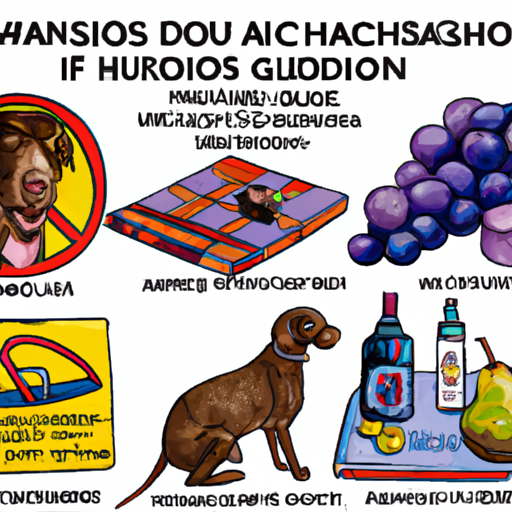Introduction
You are a caregiver, one who dedicates time, energy, and love to ensure the well-being of your furry friend. However, your role is not just about cuddles and playtime; it’s about protecting them from the unseen dangers lurking around. Let’s explore these dangers to secure your dog’s health and happiness.
1. Poisonous Foods
Some human foods are toxic to dogs. You might find your dog begging for a bite from your plate, those puppy eyes pleading for a taste. But remember, what’s delicious for you might turn deadly for them.
Here’s a table of common foods and their harmful effects:
| Food | Effect on Dogs |
|---|---|
| Chocolate | Causes vomiting, diarrhea, and seizures |
| Grapes/Raisins | Leads to kidney failure |
| Onions/Garlic | Damages red blood cells and causes anemia |
| Alcohol | Causes vomiting, breathing issues, and even death |
2. Harmful Plants
Your garden might be a paradise for you, but it could be a minefield for your dog. Some plants, as beautiful and serene as they might look, can be poisonous to dogs.
- Oleander can cause vomiting and heart failure.
- Sago Palm can lead to vomiting, seizures, and liver failure.
- Azaleas can cause drooling, diarrhea, and even coma.
3. Household Products
Your house is filled with potential dangers for your dog. Cleaning products, pesticides, and even certain medicines can harm them.
- Antifreeze tastes sweet but can cause kidney failure.
- Rat poison can cause internal bleeding.
- Certain human medications, like ibuprofen, can cause vomiting, diarrhea, and seizures.
4. Fleas, Ticks, and Parasites
Fleas, ticks, and parasites can lead to serious health issues in dogs. They can cause skin irritations, infections, and even transmit diseases like Lyme disease and heartworm.
- Regularly check your dog’s fur for fleas and ticks.
- Use vet-approved flea and tick prevention products.
- Regularly deworm your dog.
5. Heatstroke
Dogs can’t sweat like humans. They can quickly overheat and suffer from heatstroke, leading to breathing difficulties, seizures, and even death.
- Never leave your dog in a parked car on a hot day.
- Always provide plenty of shade and fresh water.
- Avoid intense exercise on hot days.
Frequently Asked Questions
Q: Can dogs eat chocolate?
A: No, chocolate is toxic to dogs and can cause severe health issues.
Q: Are all plants dangerous to dogs?
A: No, not all plants are dangerous to dogs, but some like Oleander, Sago Palm, and Azaleas can be harmful.
Q: How often should I check for fleas and ticks?
A: Ideally, you should check your dog for fleas and ticks daily.
Q: How can I prevent heatstroke in dogs?
A: Avoid leaving your dog in hot environments, provide plenty of water, and limit intense exercise during hot weather.
Being a caregiver is a role filled with challenges, but with your dedication and love, you can create a safe and joyful environment for your dog. Keep these dangers in mind and remember, when in doubt, always consult with your vet.



